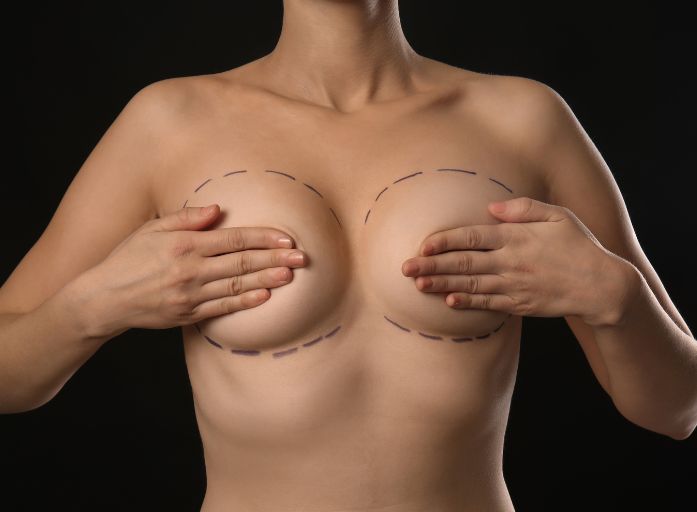Cup Size Dilemma: Local Anesthesia?

Having the chance to increase a cup size or two is quite invigorating. The problem is, not knowing which breast size would look best. A woman can only imagine what her breasts would look like in a B-cup or a C-cup, but will only see the physical change after the breast implants have been inserted. To make a wise decision and have a satisfying result, it is important to consult with an experienced board certified plastic surgeon before surgery. Use his knowledge and experience to guide you in your decisions. An experienced surgeon will listen diligently and will work to find the appropriately sized implant to safely achieve your desires. An interactive rapport with your breast specialist is important. Inadequate communication is the most common cause of angst and upset from either too large or small implants.
Be sure to know your doctors credentials. Do not assume that the doctor offering breast augmentation is a board certified plastic surgeon. Some may not even have had formal surgical training in a reputable institution. Because of their limited surgical training, access to deliver full anesthetic and surgical procedures may be restricted. Some unscrupulous providers attempt to conceal this deficiency by promoting local anesthesia for breast augmentation. Such marketing schemes are touted as less expensive and more accurate breast implant sizing under local anesthesia so that the awake patient can participate in final implant sizing while on the operating table.
The purpose of putting patients under general anesthesia is so that they won’t feel any pain during the procedure. A patient is rendered unconscious and the body relaxes. Another type of anesthesia is called local anesthesia and only a part of the body becomes insensitive to pain. An anesthesiologist is required on site when performing surgeries that require general anesthesia but not local anesthesia. With local anesthesia expense is reduced as there is no longer a need to pay for an anesthesiologist. But is it safe? Without the specialist in anesthesia, the doctor performing the procedure now is responsible for the anesthesia as well as the technical aspects of surgery. It’s very risky in fact when a doctor promotes the use of local anesthesia during breast augmentation. Unfortunately, this downplays the seriousness of surgery. Surgery has inherent risks.
Not only is pain better controlled by general anesthesia, a stable controlled environment permits the plastic surgeon to focus his efforts to achieving the best aesthetic outcome under safe conditions. Sure it would be great to see the doctor model the breast implants and check them in an overhead mirror, but what happens if something were to suddenly go wrong during the surgery? Would it be worthwhile afterwards? Even under local anesthesia, a patient is still a bit fuzzy in the head. Are they really making a wise decision when choosing their breast implants? It’s almost like drinking and driving which leads to impaired vision and judgment.
It’s risky business when a doctor promotes the use of local anesthesia to improve breast sizing during a breast augmentation.



